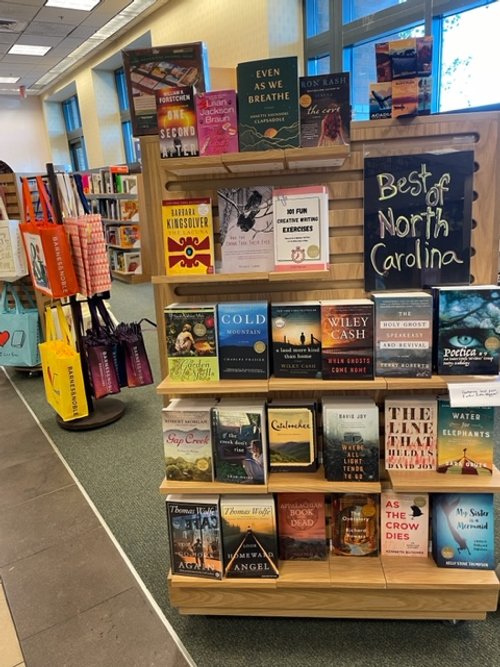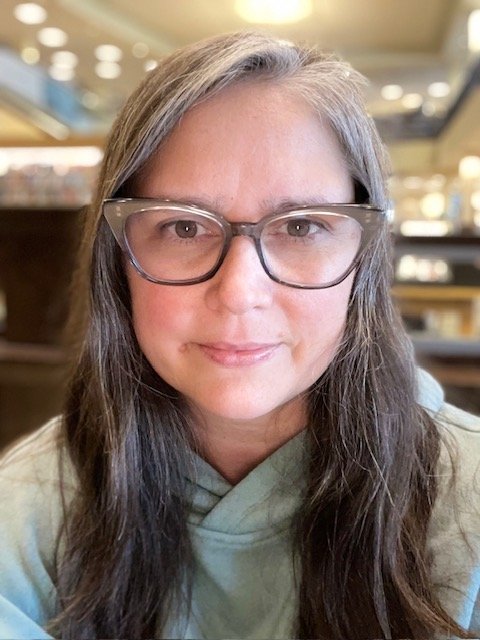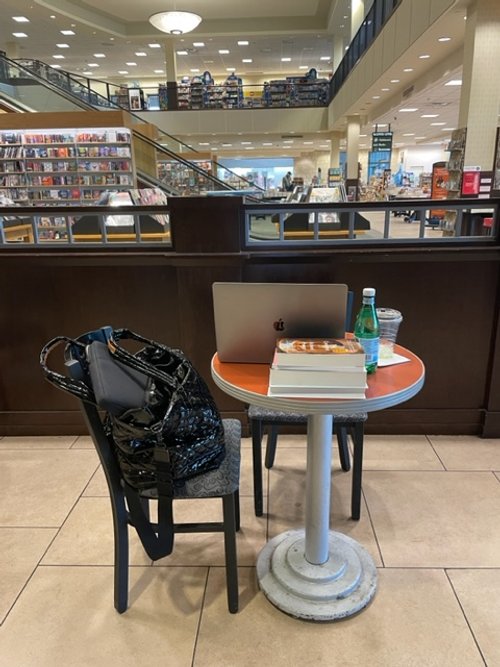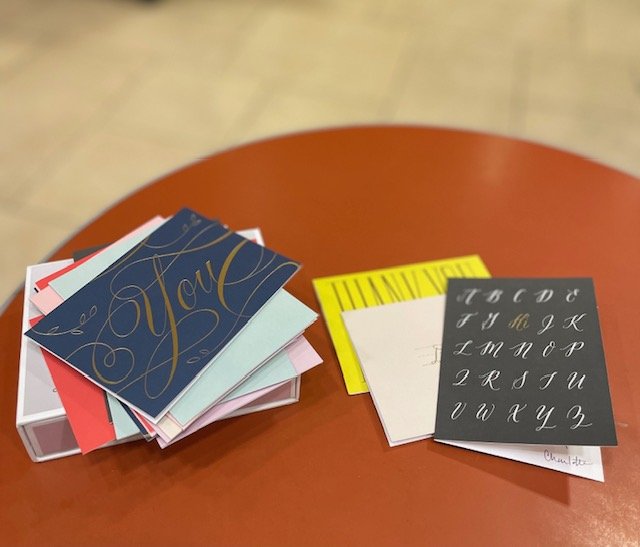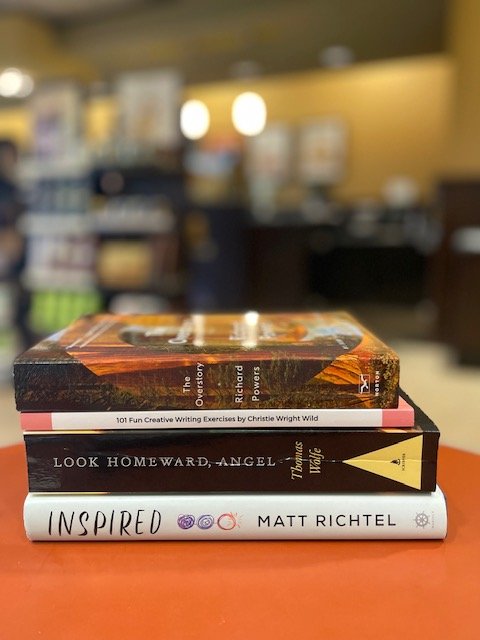The Barnes and Noble Solo Writing Retreat
Did you see this article about Barnes & Noble by Ezra Klein in January of this year? (If not, go read it real quick. I'll wait.)
I'm a fan of independent bookstores, but I still buy books from non-independent places that sell books. I buy a lot of books, and I enjoy spreading the love. I also enjoy going to Barnes & Noble, and they seem to have turned things around. I've been concerned about our local Barnes & Noble closing for several years, and I get to remove that item from my BIG LIST OF THINGS TO WORRY ABOUT.
Barnes & Noble holds a lot of happy memories for me. My husband, Tim, and I have been going to our local Barnes & Noble for nerd dates at The Summit shopping center here in Birmingham since it opened in 1997. Our kids have grown up going to Barnes & Noble during family outings to peruse the books, toys, and other gift items, drink fun beverages, and sit together in the café for a little while before going home.
Going to Barnes & Noble is a perfect activity for our family because it allows us to separate and go our separate ways, then come back together to chat about what we discovered. (When our kids were little, Tim and I had to keep tabs on them, but it was still enjoyable because of books! toys!, drink! treats!)
Barnes & Noble is also fun solo. And it's an excellent place for a Solo Writing Retreat.
Why Should You Have a Barnes & Noble Solo Writing Retreat?
Even if you're traveling and decide to have a retreat at a Barnes & Noble you've never been to, you'll probably feel comfortable and have a pretty good idea of what to expect when you walk through the doors. Well, unless you've never been to a Barnes & Noble. (Are there people who have never been to Barnes & Noble?!?) The Barnes & Noble Solo Writing Retreat is a fantastic option for anyone who finds themselves near a Barnes & Noble and appreciates the familiarity of the chain bookstore that usually has a decent size café area with plenty of seating.
How Do You Have a Barnes & Noble Solo Writing Retreat?
You can have your Barnes & Noble Solo Writing Retreat however you prefer. Since all of life is the writing life, there are no wrong answers! You know what you need for this particular retreat more than anyone else knows what you need. But I've included a few notes based on how I do my Barnes & Noble Solo Writing Retreats below. And if you want more guidance, ideas, and retreat itineraries, our SDW Barnes Noble Solo Writing Retreat Guides are an excellent resource. (See the note at the bottom of this post for everything included!)
Plan
Think through your approach. Make decisions regarding the day, time, duration, how you want to use your time, etc. I'm a fan of the Four-Hour Solo Writing Retreat, which usually works well for my Barnes & Noble Solo Writing Retreats.
I also decide on a spending limit ahead of time. When I have a lower budget, I usually purchase hot tea in the café and leave it at that. If I decide to have a higher budget for my Barnes & Noble Solo Writing Retreat, I may buy two or three different beverages and two or three books.
I encourage you to buy at least one thing during your Barnes & Noble Solo Writing Retreat. You can at least spend $3 on a plain brewed coffee or tea. I do not condone camping out in a place of business for four hours without purchasing anything.
It's best to be alone for your Barnes & Noble Solo Writing Retreat, but if solitude is not an option, take headphones or earbuds and ask your companions to let you have your retreat without interruptions.
I like to make a plan for how I'm going to use each hour of my Solo Writing Retreats. I include different nourishing rhythms to help me have the writing retreat I need on that particular day. You may choose to do different nourishing rhythms during your retreat, but what I've included below will be helpful and spark some ideas.
Also: Every Solo Writing Retreat is better with Magic Mind. Learn more about why I love to take Magic Mind to my writing retreats and get 20% off here.
Also: You can follow along and see glimpses into some of my Solo Writing Retreats on the @solowritingretreats Instagram account!
Read
Reading is always a good thing to do during a Solo Writing Retreat, especially if you're in a bookstore surrounded by books. You can read anything during your Barnes & Noble Solo Writing Retreat. If you're in the middle of writing a work-in-progress, you can read something related. You can also read something fun that has no apparent connection to anything you're writing or want to write. I love to visit the B&N magazine rack and collect an armful of literary journals (and non-literary publications like the latest People magazine!) that will give me plenty of reading material for 45 minutes to an hour.
Write
Writing is also a great thing to do during a Solo Writing Retreat. You can write whatever you want during your Barnes & Noble Solo Writing Retreat. Sometimes I like to write letters to friends during my Barnes & Noble Solo Writing Retreats. I buy a box of fun notecards and catch up on correspondence.
If you need or want more guidance with retreat plans and prompts for writing (and prompts for reading, moving your body, contemplative practices, and taking notes), consider becoming a SDW Member, which will give you access to all SDW Solo Writing Retreat Guides and Resources, including the Barnes & Noble Solo Writing Retreat Guides.
Move
You can move however you want during your Barnes & Noble Solo Writing Retreat, but I recommend at least a few minutes of physical activity every hour or so. Sometimes it's easy to forget about our bodies while we're writing. Remember your body! I usually stand up and wander around for 10 minutes at the top of every hour during my Barnes & Noble Solo Writing Retreats. When I have a retreat at my local Barnes & Noble, I try to walk outside at The Summit shopping center for at least 20 minutes before even going into the B&N.
Play
You can play however you prefer during your Barnes & Noble Solo Writing Retreat. One way I play during my Barnes & Noble Solo Writing Retreats is by taking a baggy of crayons or colored pencils with me and purchasing a discounted coloring book of some sort to use for 10 or 15 minutes in between more taxing writing or reading sessions. Perusing shelves and tables full of books, journals, and notebooks feels like play, too.
During my most recent Barnes & Noble Solo Writing Retreat, I flipped through a magazine containing several drawing lessons and instructions and sketched for a few minutes in my journal. It felt playful to me.
Also, while discussing play, I want to point out that any pleasurable activity can be play. In a study called "The Ambiguity of Play," Brian Sutton-Smith found that although we all think we know what play is, people use the term to cover various activities. Sutton-Smith argues that it's impossible to define what play is, only what different theorists have claimed it could be. So, you get to decide if something is play or not. You don't even have to explain why your preferred methods of play feel like play. Because that feels like work. Not play.
Divine Drawing
One contemplative practice I recommend to SDW clients is something I first wrote about in The Great Belonging: How Loneliness Leads Us to Each Other.
Place attachment exists, and one thing that helps us belong to places is drawing. You can draw whatever you want. You can draw a bookshelf or a window, or a beverage container. The purpose of this drawing exercise is to see differently and notice how you see while drawing. The goal is not to draw a perfect picture. Find more information and instructions for the Divine Drawing contemplative practice here.
Plan a Meal
During a recent very last-minute Barnes & Noble Solo Writing Retreat here in Birmingham, I was ready to move on to the next thing once I hit the three-hour mark. Because I tend to have Four-Hour Retreats, I thought about ways to use my fourth hour to wrap up my retreat instead of ending it early and decided to use the fourth hour to plan a meal, buy groceries, and cook something delicious for myself. (It would've been fine to have a Three-Hour Retreat because the Four-Hour Retreat framework is just a suggestion. Four-Hour Retreats usually work well for me, but no one is making anyone have a Four-Hour Solo Writing Retreat.)
Once I figured out my plan, I grabbed a few recently published cookbooks and returned them to my table in the B&N café area. After flipping through each cookbook, I settled on a green curry recipe that looked simple, flavorful, and doable. I snapped a photo of the recipe, jotted down the ingredients list, and walked to Trader Joe's next door.
Buying the ingredients, driving home, preparing my dinner, and eating took precisely one hour. For some reason, including this meal preparation process in a Four-Hour Solo Writing Retreat made it seem less of a chore and more like play.
Reflect
I encourage you to journal for a few minutes at the end of your retreat and subsequent days. How will you tweak your retreat next time? What else do you want to incorporate? What do you want to skip?
I hope you enjoy your Barnes & Noble Solo Writing Retreat. Let me know how it goes!
Below are some photos from a Barnes & Noble Solo Writing Retreat I had last week when I was in Asheville.
Charlotte Donlon helps her readers and clients notice how they belong to themselves, others, God, and the world. Charlotte is a writer, a spiritual director for writers, and the founder of Spiritual Direction for Writers™. Her essays have appeared in The Washington Post, The Curator, The Christian Century, Christianity Today, Catapult, The Millions, Mockingbird, and elsewhere. Her first book is The Great Belonging: How Loneliness Leads Us to Each Other. She’s currently writing her next book, Spiritual Direction for Writers, which will be published by Eerdmans in 2024.

